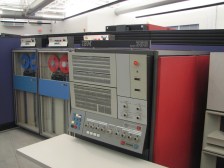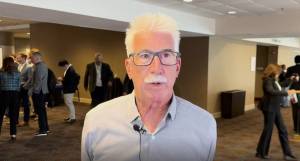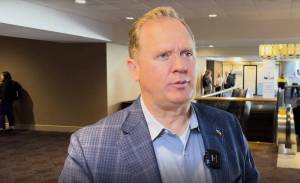NASTD tackles potential ‘silver tsunami’ with education
Mark McCord sees a “silver tsunami” on the horizon for state governments across the country.
“A lot of folks in state government are eligible for retirement in the next three to five years. That wave is going take a lot of technology knowledge with it,” said McCord, executive director of the National Association of State Technology Directors.
But McCord said that his group, which serves 660 representatives from state technology departments, would be working tirelessly to fill what he sees as a serious potential knowledge gap.
That’s one of the issues the NASTD expects to tackle at its upcoming “Annual Conference and Technology Showcase” in Cincinnati, Aug. 23-27. But the NASTD also plans to reach out to as many of its members as it can in whatever ways it can.
“We are looking to use social media more now as a communications vehicle with our members,” McCord told StateScoop in an interview in April. “We employ Twitter, Facebook, LinkedIn, and we employ those quite frequently today. We’re also using webinars to educate our members and to share issues and collaborate. We try to do a quarterly webinar right now on a topic of significant interest.”
McCord specifically hopes to bolster participation in those webinars in the coming weeks and months, as well as drive more users to the burgeoning community section of the group’s website.
“We also have very robust e-groups on our website, so we’re trying to encourage our members to use those,” McCord said.
While McCord and the NASTD will indeed be working to bridge anticipated knowledge gaps for the technology staff left behind in the “tsunami,” he added that NASTD will also be focusing on helping governments get smarter about recruiting new talent.
That process has already started in most states, he said.
“State governments today are getting very creative in taking some of the private sector workforce techniques,” McCord said. “They are actively recruiting today, whereas they didn’t do as much of that in the past. They’re also taking a look at their civil service requirements and trying to modernize those. Many of those were created 50 years ago or more and really don’t fit the hiring needs of a 21st century workforce.”
Once states are able to bring those new hires on board, McCord said his group would be ready to help them get acquainted with the field with its ample resources.
“You need to get involved as quickly as you can,” McCord said. “You need to go to the Listserv, put a question out there that you need information on from a colleague from around the country.”
While the turnover in personnel may be a difficult one for many agencies, McCord believes it’s also necessary as the states prepare to confront emerging IT issues.
“Security is one of the top issues in the tech world today and we’re also dealing with mobility, which is a related issue to security,” McCord said. “Folks want to be able to access state government on their mobile devices and their pads.”
But even with big changes on the horizon, McCord feels confident states are up to the challenge.
“State government is really taking a very serious look at becoming more efficient and more productive in providing services to citizens and taxpayers and they’re implementing technology in much smarter ways than they have in the past,” McCord said. “They’re not really afraid now to take a closer look at outside partnerships and to use technology such as cloud-based technology for a lot of the operations that they have.”






